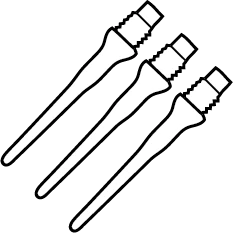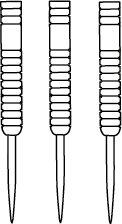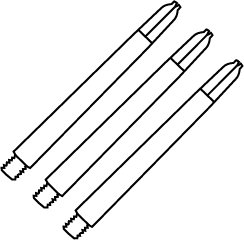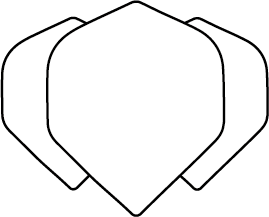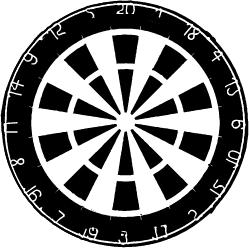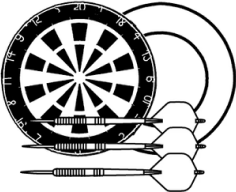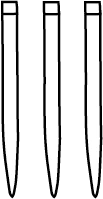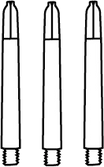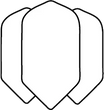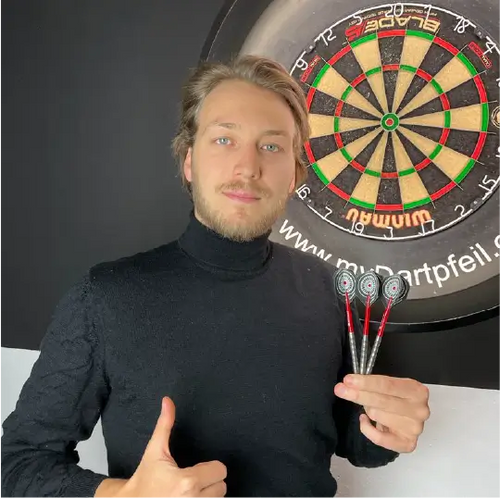
Lukas ist Dart Fan der ersten Stunde und seit über 10 Jahren passionierter Dartspieler. Spätestens nach dem Besuch der Darts WM 2016 im ehrwürdigen Alexandra Palace mit seinem späteren Co-Founder und damaligen WG-Partner Timm war für ihn klar: Darts muss auch in Deutschland größer und bekannter werden. Mit myDartpfeil und dem weltweit einzigartigen Dartpfeil Konfigurator kann sich jeder Dartspieler - von Anfänger bis Profi - seine eigenen, perfekten Dartpfeile zusammenstellen und individuell gestalten.
Everyone has probably asked themselves whether there is a perfect throwing movement when it comes to dart throwing techniques. To anticipate the answer: We have to disappoint you, because unfortunately there is no perfect dart throwing technique .
However, there are some rules that you should adhere to. These apply when aiming, holding and releasing the dart. We would like to give you an insight into what is important when holding the dart and the throwing movement in order to play good darts and improve your own dart throwing technique.
The aiming
The first process involves aiming . Aiming is done by aiming at a specific field with your eye . Some players also use the dart to target a field.
For example, by holding the tip of the dart in front of the eye on the desired field. However, when it comes to darts, aiming is only partly conscious , as the desired success does not depend on aiming itself.
Rather, a good player benefits from an automated and repeated movement .

Holding the darts
The dart throwing movement also includes the grip on the dart . Of course, this should always be the same . However, this is much easier said than done, as even a millimeter can cause large differences in the throws.
For example, if you grip the arrow a millimeter further back or forward than usual, this can have a big impact . In the end, perhaps that exact millimeter is missing to end a game and hit the double court .
Basically, darts is a game in which the game device is held with two fingers . However, this is not a must .
Holding with three or even four fingers is also being practiced more and more frequently by professional players. While Phil Taylor grips the dart with two fingers, Rob Cross closes almost half his hand around the dart.
Ultimately, how you hold the arrow is purely a matter of feeling. The only important thing is that you always hold the dart the same way.

Retraction of the throwing arm
It's not just the correct finger position when playing darts that is important, but also the sequence of movements during the throw itself. This also includes reaching out and gaining momentum for the release - the so-called pulling back.
This process must also be automated for a perfect dart throwing technique . However, with any process that involves movement, it can be difficult to repeat it exactly every time.
There is also the possibility of subjecting your own dart throwing technique to a throwing analysis. The professionals do this, for example, using state-of-the-art computer programs and analyze their throwing movements precisely with the help of high-speed cameras.
What is also very interesting in this context is the different approaches of the different players. While some people pull their arm back next to their head, others only hold the dart up to their nose and minimize this retraction movement somewhat.

The acceleration
Acceleration is the fourth part of the throwing motion. The quality of the game probably depends most on this. It is precisely during acceleration that differences occur relatively often.
To prevent this, you should find a way to control yourself how quickly you make the throw. It's about getting a good feeling for the release.
In the end, the acceleration is an interaction with the first point, aiming. Because it is precisely the perfect combination of visual aiming and the feeling of accelerating to hit a certain field that can shape your success.
The release of the arrow
The release of the arrow describes the moment of letting go. One thing should be said about this. If you have problems with your dart throwing technique, then it is quite possible that it is due to the throw.
The now no longer unknown dartitis , a disease in which the player can no longer release the arrow at the desired moment, is a big problem.
The moment of dropping and letting go of the darts is not easy for most hobby players. Because if it were that easy to repeat this process exactly every time, then we would all be darts professionals.
The throwing movement
An accurate throwing analysis also includes the throwing movement . Especially if the throw is completed improperly, long-term problems arise in the game. Here you can remember a rule for beginners to ensure the same process over the long term.
First of all, it is important to view every dart as equally important. Then it is also important that the throw is completed completely . You can check this yourself using a simple method.
After each throw, you force yourself to “point behind” the dart with your index finger. So pull your arm completely through and follow the trajectory with your index finger.

The flight curve also needs to be observed
It is particularly worth watching the flight curve. If you record and analyze these in the form of a video, you can find out a lot for yourself. For example, whether the arrow needs to land a little more straight in the board or not.
This allows you to redesign the dart so that the desired effect occurs . It's worth reading our other blog articles on suitable flights , shafts and barrels . But it's not just the trajectory that is a good tool for working on your own dart throwing technique.
The position is also very important. It's not for nothing that some players, such as Stephen Bunting, stand slightly offset and not straight to the board . You should also find out your best position on the oche in order to place the arrow in the desired field.
Often a player has a slight left or right spin . This causes the dart to land on the 5 or 1 rather than the 20.

The perfect dart throwing technique requires patience
So pay attention to all these parameters mentioned above and try to constantly work on your throwing style . Then you will also improve your throwing accuracy in the long term. But a little patience is also necessary, because as an old saying goes: “Good things take time”.
In order to continue practicing the throwing technique, perhaps even outside of darts, it is worth trying out similar movements or movement sequences . At best, these are not directly associated with an annoying exercise.
We also have an example there: If you like to go out for a drink with a few friends at the weekend, you've probably played a game of beer pong at least once or twice. Here you have to get a table tennis ball into a cup filled with beer. And here, too, it's all about circular movement and precise aiming.
Learn the best techniques and proven tips that will make you a darts champion. Click in now and start your journey to perfection on the dartboard!
- From beginners to professionals: Our secret tips for dart finger position will improve your dart game. Click in now and expand your skills!
- Broken dart tip ? You can find quick help here. Including helpful tips and step-by-step instructions. Click in now and find out more!





